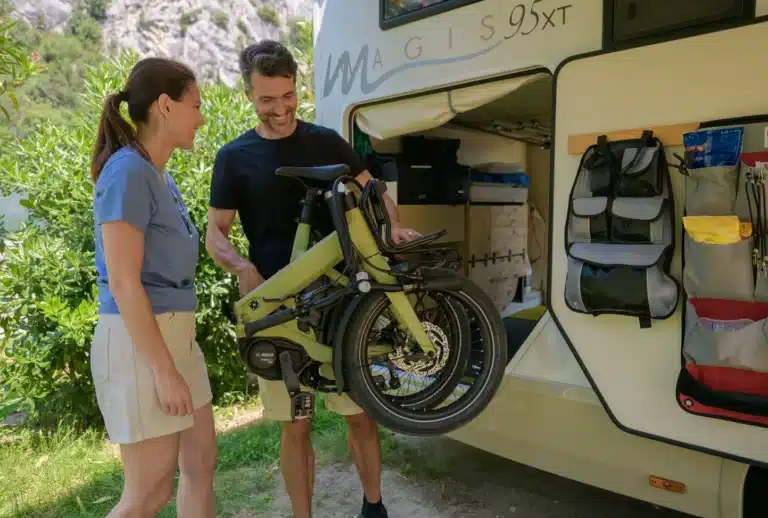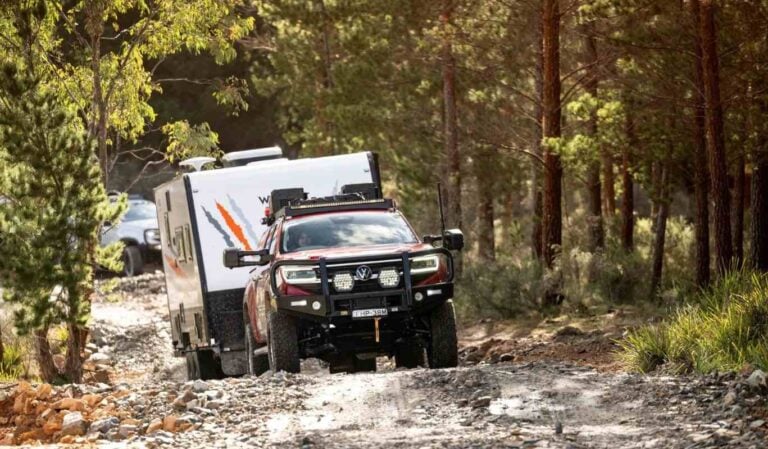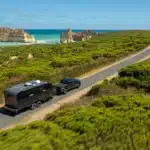
You’ve got the road trip bug and want to travel Australia in style. But which is more suitable, a caravan or motorhome?
What’s the difference?
For newbies, let’s explain the difference. A motorhome is an all-in-one set-up built onto a mini-van, bus or truck chassis. Motorhomes can range from a small, no-frills two-person campervan (think, backpackers doing a big lap of Australia) to a six-berth penthouse on wheels. Caravans, on the other hand, are trailers with living and sleeping quarters completely separate from the vehicle, and must be towed. To experienced RVers, this distinction might be bleedingly obvious, but you’d be surprised how many newcomers don’t know the difference.
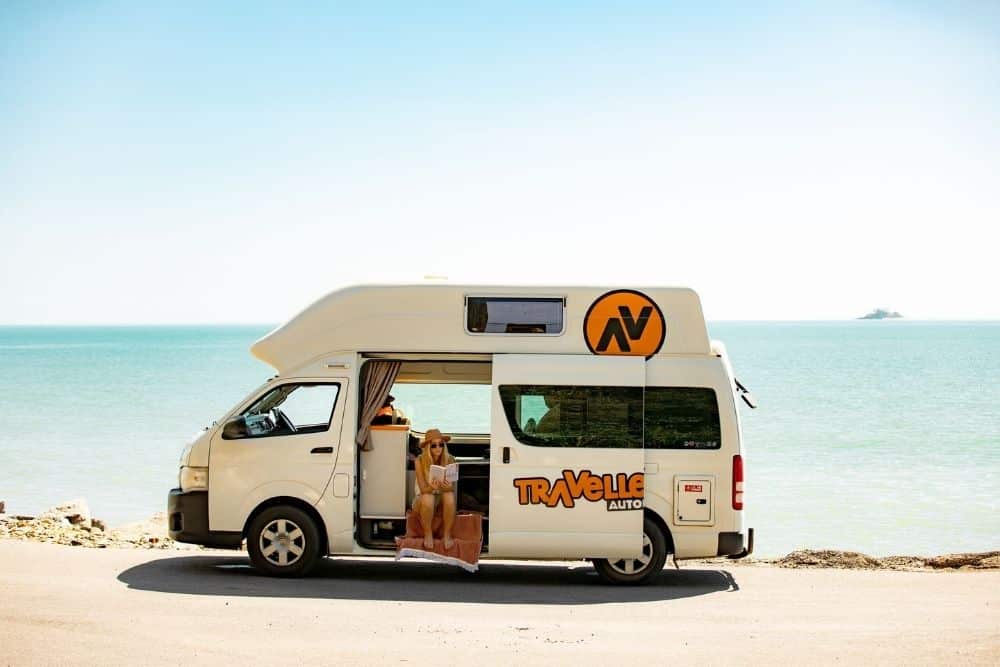
MOTORHOME PROS
No towing
Let’s start with motorhomes. The biggest selling point of a motorhome is there is no towing involved. Forget hitching and unhitching and reverse parking a trailer that behaves counterintuitive to the steering wheel. Motorhomes offer the simplicity of an RV in one manoeuvrable unit, much like a mini-van or light truck. This means a simpler drive, with no need to worry about trailer and tow ball weights, sway and wide turning circles with a trailer that cuts corners and swings out at the back. Motorhomes are a great option for people who are nervous towers and enjoy the convenience of having an all-in-one RV.
Less pack-down
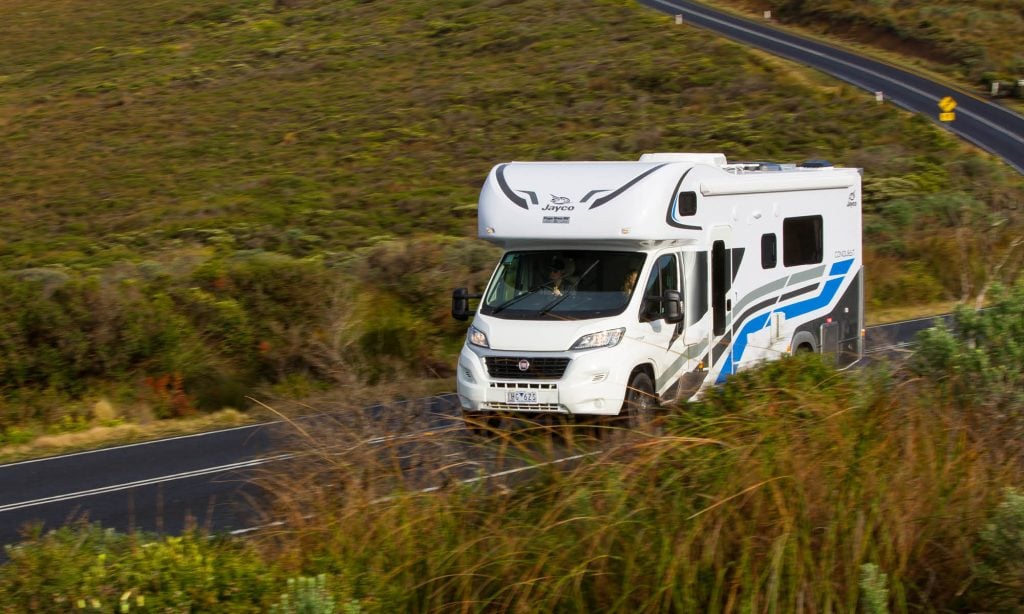
Need to hit the road in a hurry? Motorhomes are quicker to pack down and get moving than a caravan. Simply unplug the power and water, stow your things, close the windows and doors and you’re good to go. Caravans are a little more complex. You need to wind up the stabiliser legs, hitch up the caravan, connect the electrical plugs, stow the jockey wheel and check the lights are all working correctly. Then you need to navigate your way out of the caravan park or campground, keeping a lookout for any hazards that might connect with the trailer.
Sightseeing flexibility
Unless you’re driving an eight-tonne bus, motorhomes are generally much easier for stopping and sightseeing en route to your destination. Because they are typically more compact than a caravan, you can explore during your journey and also stock up the pantry shelves on the way. Caravans are more difficult to manoeuvre and park, which means that unless the attraction has long vehicle parking, you need to find somewhere to unhitch before you visit. This can entail some backtracking and often means overnighting more frequently. Caravanners need to be smart about how they plan their journeys, sometimes opting to stay in one location and using it as a base to explore a broader destination.
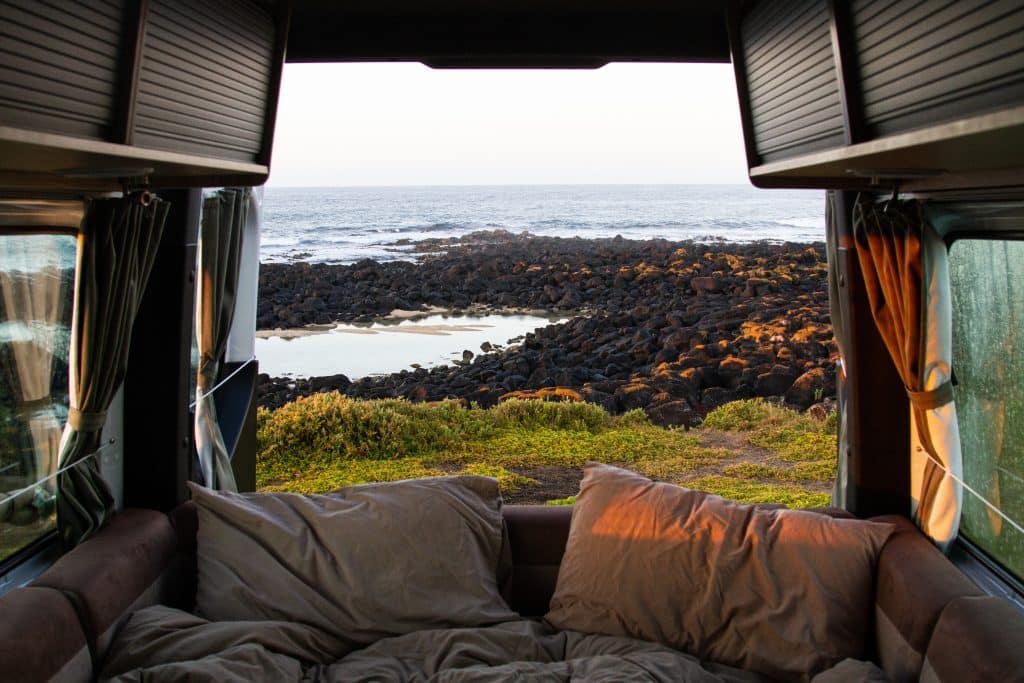
Safety
Just about every RVer has had that eerie feeling when pulling up at a deserted free camp with not another soul in sight. Is it safe? Am I going to be ambushed by a depraved outlaw in the middle of the night? The great thing about most motorhomes is you can access the driver’s cabin from inside the RV. This means if something untoward happens overnight, you can lurch out of bed, quickly jump behind the wheel and get the hell outa there pronto. This is especially attractive to solo travellers, particularly women. In a caravan, even if you have left the trailer hitched overnight, you will still have to go outside to get into the driver’s seat, making you vulnerable to whatever, or whoever, is lurking in the dark.
Goods to go
Motorhomes combat the morning packing conundrum. Will you need bathers for the day’s outing or a warm jacket? Is it going to rain? Should you throw in a rod just in case the fish are biting? With a motorhome, all your belongings are with you – all the time. This means no forgetting the sunscreen, water bottle or sheet of paper with the boom gate code. And if you find an inviting beach, you can park up for the day, have an impromptu swim, pop the kettle on and even warm up afterwards with a hot shower (provided your motorhome has an ensuite).
CARAVAN PROS
Roam free
While it’s often convenient having your home on wheels with you all the time it can be equally restrictive. Run out of milk? Your home must go with you. Fancy hiking in a remote national park? Your motorhome might be too big to squeeze into the trailhead car park. The beauty of a caravan is you can unhitch and then set and forget until it’s time to move on to your next destination. This gives you freedom to explore unhindered by a big, cumbersome RV. You can access areas with your vehicle that may be off-limits to most motorhomes (hello, driving on Cable Beach at sunset). You can also divide and conquer back at camp – Mum can relax back at the caravan with the toddler while Dad drives to a fishing spot with the teenager. Win, win.
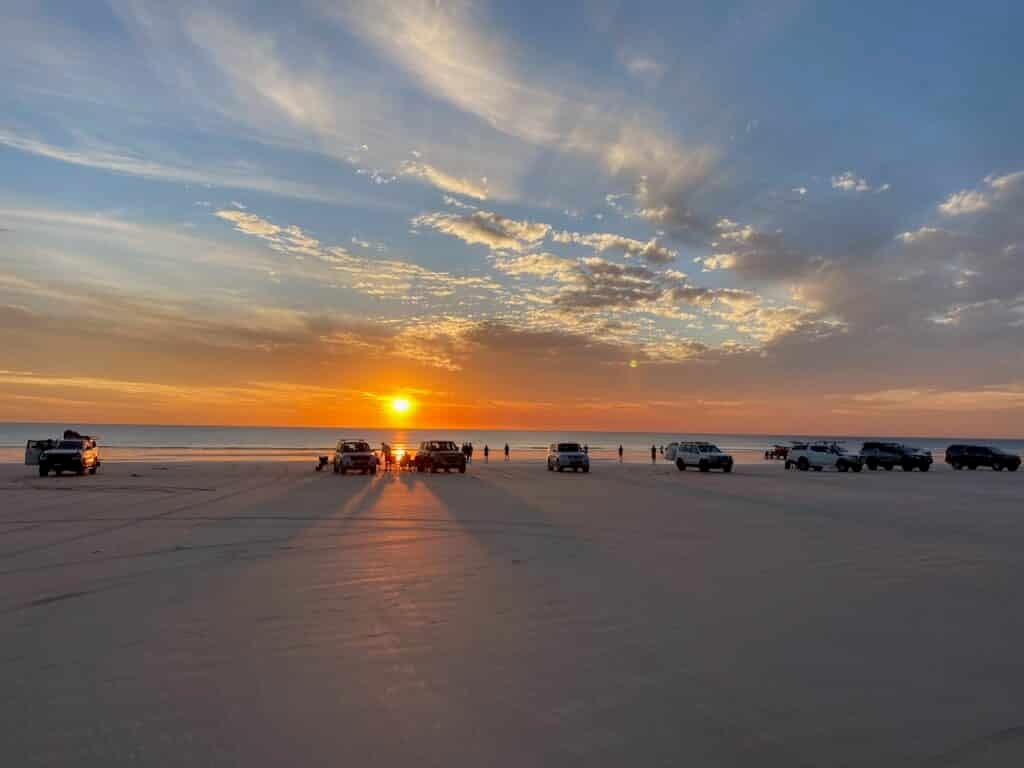
Site security
Ever lusted after a prime beachfront spot at a free camp? What are the chances of it still being there if you head out sightseeing for the day in your motorhome? While you may leave out a camp table and chairs to indicate ‘hey, this spot is taken’, that’s not necessarily going to stop another camper from moving in, especially after someone else has taken (or moved) your gear. With a caravan, there’s no chance of anyone pinching your patch.
Get settled
You can also make yourself more at home at a site when your RV is stationary for the duration of your stay. Erect the annex, put up the clothesline, take down the kids bikes and store the SUP and other toys under the caravan. They can stay there until the day you depart. Leave your belongings unattended when you take out the motorhome, on the other hand, and your gear might be easy pickings. Caravans typically have more storage and water and solar capacity than a motorhome, but it depends on the size and model you choose.
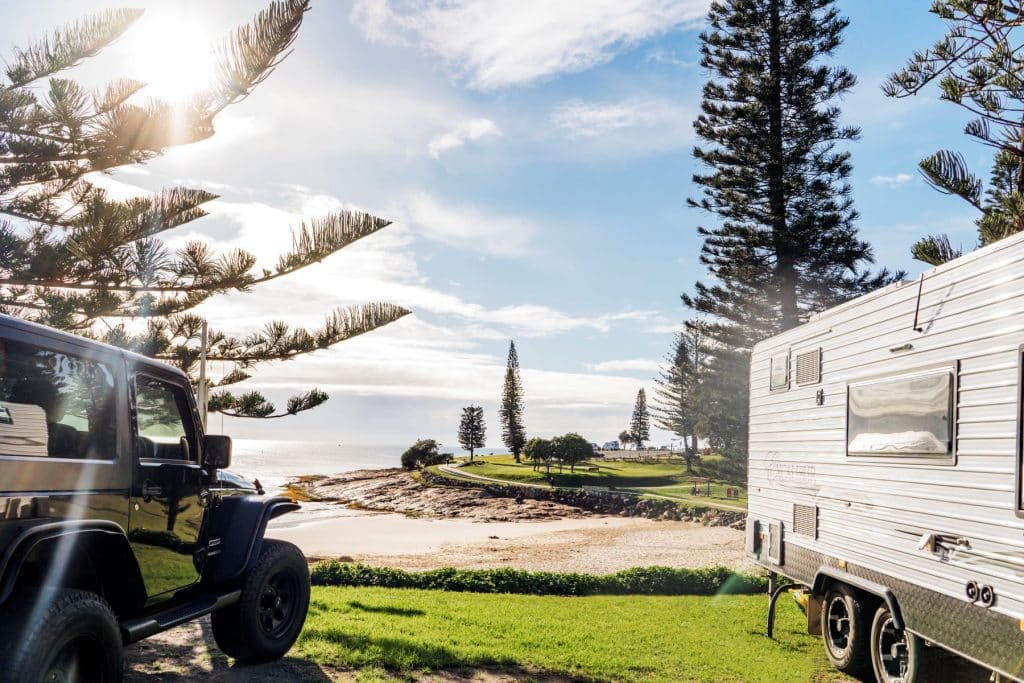
Cheaper to buy
Caravans are generally cheaper to buy and maintain than a motorhome. You can pick up a small caravan, like the Ezytrail Winton 10, for less than $25,000, even less for a second-hand model. Campervans start at about $100,000 (see the Kea Navigator Mercedes-Benz) and if buying second-hand, you need to be confident of the vehicle’s mechanical integrity. Servicing a motorhome is also more expensive than servicing a caravan. Of course, a caravan requires a tow vehicle, so it’s not strictly a fair comparison, but remember a conventional vehicle has a function and purpose when it’s not towing.
Storage friendly
This brings us to another point – usage. When not in use, a caravan can be unhitched and stored at home or in a storage facility and you can continue to drive the tow vehicle. With a motorhome, it’s not practical to use the vehicle as a day-to-day runabout, nor is it good for the engine to sit idle for extended periods. If you take short, intermittent trips a few times a year, a caravan is a better option. If you enjoy the convenience of a motorhome and travel for months at a time, several times a year, a motorhome might be your best bet.




